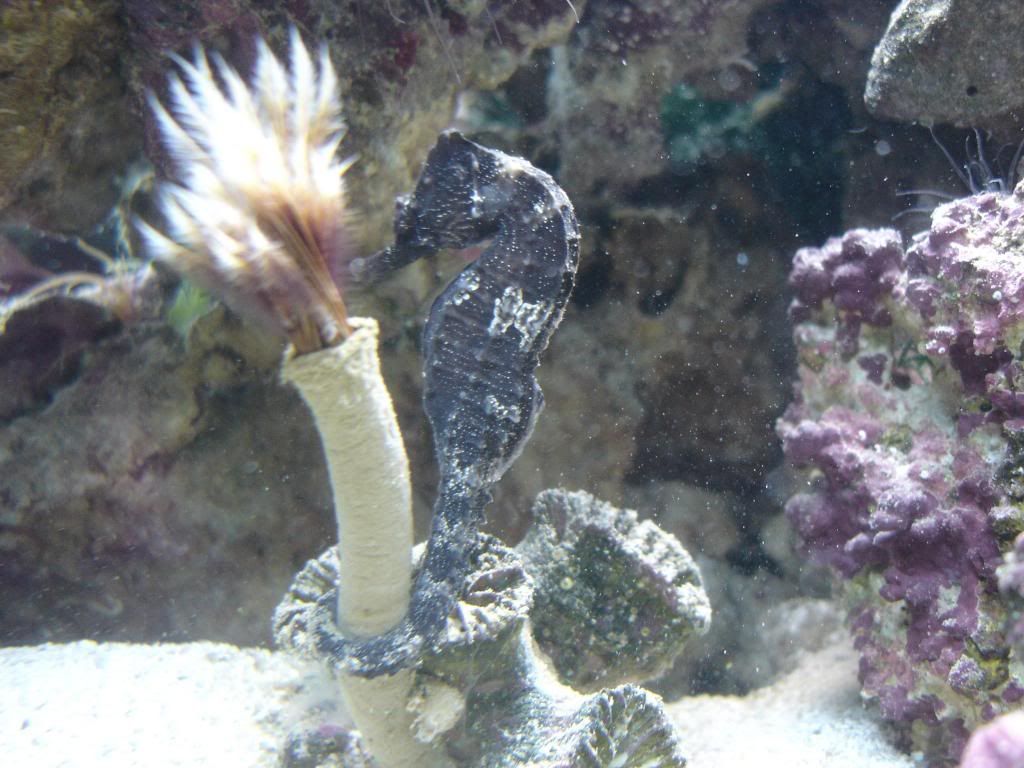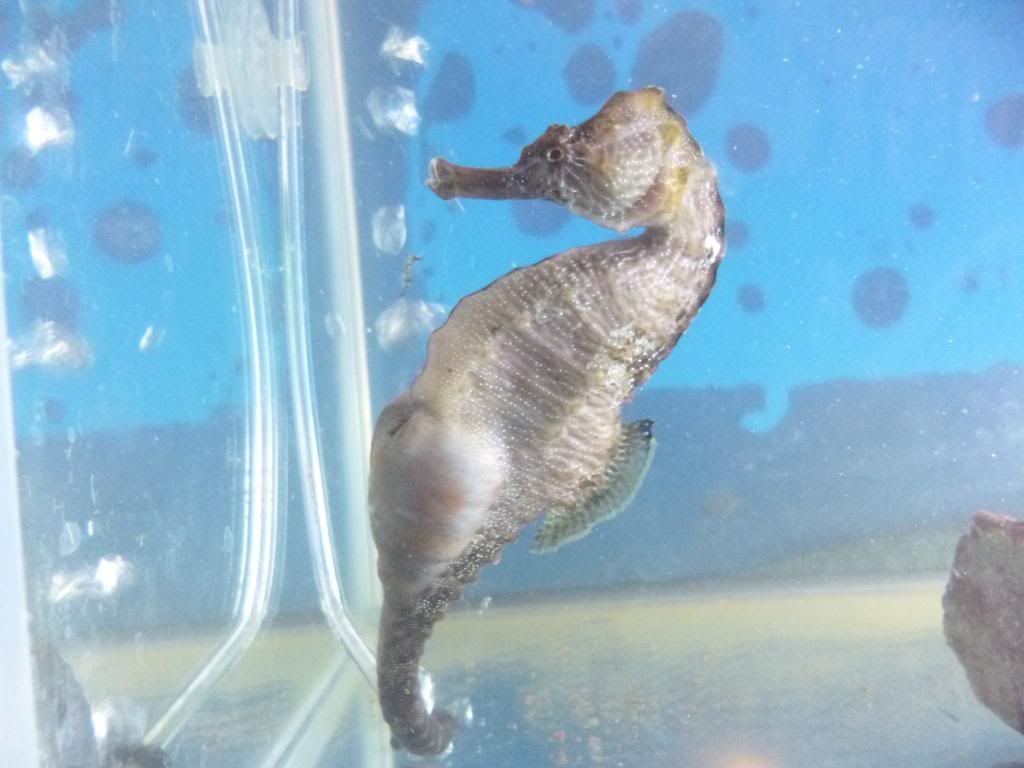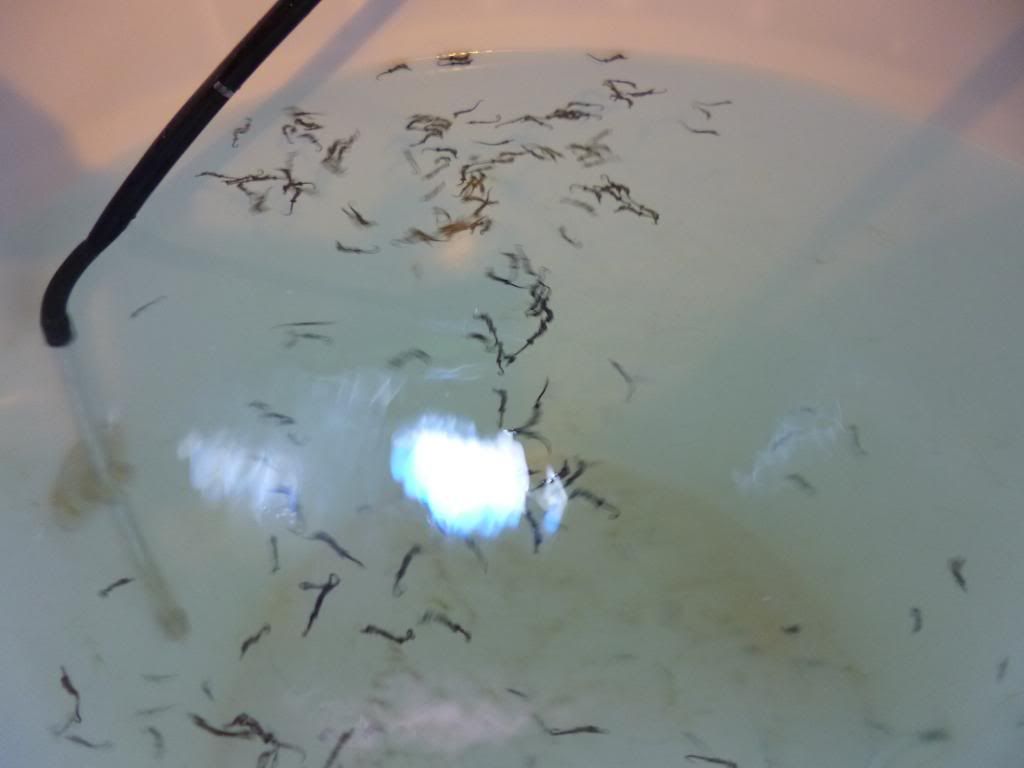Seahorse Adventures
Saturday 7 September 2019
Dwarf Seahorses (h.Zosterae) Hunting
Monday 17 December 2018
I'm Back!
That is, I have seahorses again, or to be more specific H.erectus. I have had a lonesome seahorse of unknown species for a while now but I decided that he needed a friend and so popped into a nearby aquatic store to place an order. As fate would have it, they actually had seahorses in stock for the first time! My husband and I decided to get two and pensively looked at eachother when deciding whether to get males or females.
The happy couple have been flirting away already, so at the moment I'm hoping the high flow can prevent the inevitable!
This feels a bit like a new beginning, and as the other seahorse is named Popcorn (same name as one of my first seahorses) I have decided to call these Cosmo and Orion, also the names of two of my first (successful) seahorses.
Monday 2 July 2018
So this happened!
Wednesday 10 September 2014
Silence of the Seahorses
Tuesday 28 May 2013
A Serious Drug Problem....
- Make sure that you purchase your seahorses from a reputable source. Do not purchase wild caught, tank raised, or captive bred seahorses that have been kept in a system that has their tanks on a combined system mixing water from tanks that contain either of the aforementioned types of seahorses.
- Do not overcrowd your tank. Remember, seahorses are messy eaters and require more volume per inch than most other fish. Check the size of the tank that you keep the seahorses in. If you are just about meeting the bear minimum requirements you may quickly find that your tank becomes unmanageable.
- Keep up with Tank Maintenance. Make sure that you stick to your tank maintenance routine, including regular water changes and checking that there are no dead spots* within the tank. Check that all tank mates (including corals) are suitable to keep with seahorses (Seahorse.org has a great guide). Use a probiotic, such as Sanolife to help with the control of pathogenic bacteria.
- Keep an Eye on the Temperature. High temperatures in a seahorse tank can be a real problem and whilst a seahorse might live in a location where the temps reach the high 70's in the wild, in captivity this can be a killer. Growth rates of bacteria increase greatly in higher temperatures and so its always best to keep temperatures in the low 70's for tropical species.
- Feed a Varied Diet. As well as offering different types of shrimps, I always find it a good thing to have a variety of brands too as this seems to help prevent seahorses becoming fussy eaters. Also, if you are lucky enough to be able find a live food source, this can also be introduced to the seahorses diet and is a great way of introducing vitamins and supplements.
- Do not mix species. For the same reason as indicated in point 1, seahorses of different species should not be mixed to avoid introduction of pathogens from one species to another. This includes any fish from the same family as seahorses, i.e. pipefish.
- Do not delay treatment. If you suspect that your seahorse may be ill, or you notice something different about your seahorse, either in appearance or character, seek immediate advice. Joining a forum like seahorse.org or fusedjaw can be a life saver. Refrain from getting advice from a single person in private as this can be detrimental to the seahorses welfare if they aren't as experienced as you think they are. Even if they are extremely knowledgeable, its easy to get distracted, confused or miss a vital piece of information and inadvertently give bad advice. This can quickly and easily be corrected if the advice has been given in public.
Sunday 21 April 2013
Questions that I get asked
Q: What is a feeding station
Q: How can I remove algae from seahorses
Q: How many times a day should I feed my seahorses
Q: What do seahorses eat
Q: Why is my seahorse so small
Q: I have seen a tiny seahorse at my local fish shop and am very tempted. Should I buy it?
 |
| With kind permission of Tami Weiss, http://www.fusedjaw.com/ |
Wednesday 13 March 2013
Brood Comparisons
 |
| This is Ed the first week that I got him |
 |
| And this is him delivering one of his more recent broods. He looks skinny in this picture as its quite common for him to go off food a day or two before the birth |
 |
| Midge at a year old |
These are the pictures from the two broods delivered. The first two pictures show Ed's babies, and the third show's Midges babies.
 |
| Ed's Brood - we lost a lot of these to the tank which is why the brood seems quite small |
 |
| Also Ed's brood |
 |
| Midge's first brood |
